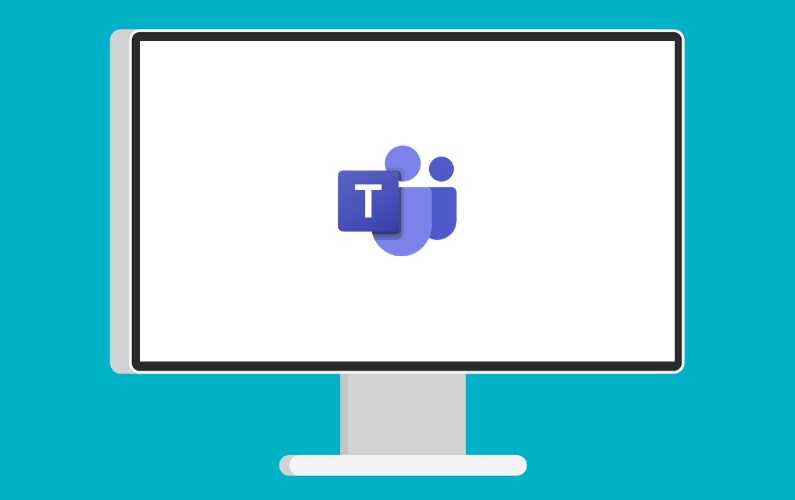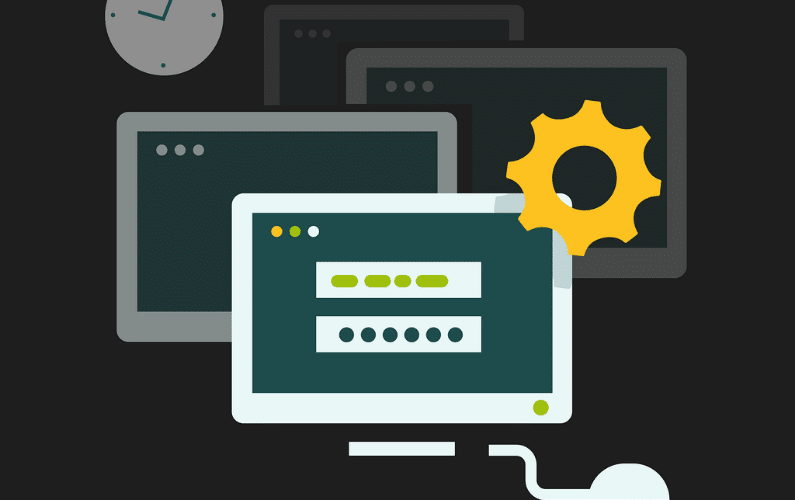Cyber threats constantly put businesses in jeopardy of losing money, data, and confidential information. As an owner of a small or mid-sized business, you work hard to grow your enterprise; a cyber threat can stop productivity and jeopardize your bottom line.
Cybersecurity risks continue to arise. Here is what you need to know to identify emerging threats and protect your company.
An Evolving, Elusive Threat to Your Business
The dynamic, elusive nature of cybersecurity threats creates a host of practical challenges for businesses, not least of which is the difficulty of evaluating the potential costs of unknown future risks and balancing them against the present cost of investing in defensive and preventive measures.
Virtually every day, new viruses and vulnerabilities emerge as potential threats to your business. But as any business leader knows, budgeting for how to combat those threats can feel like choosing between spending money on a black box solution or risking seeing your company disappear down a black hole.
Business owners understandably lose sleep over what constitutes an appropriate investment in cybersecurity for their enterprise. On the one hand, it’s tempting to assume that your business holds little interest for cybercriminals and discount the possibility of a serious threat. On the other hand, research reflects that over 40 percent of cyber attacks target small businesses that, once breached, have little capacity to weather the fallout.
Biggest Cyber Risks for Businesses in 2022
To help you balance those competing considerations, here is a review of some of the top cyber threats facing businesses in 2022, according to the Cybersecurity & Infrastructure Security Agency (CISA).
Identity Fraud
Most people think of identity fraud as a threat to individuals rather than commerce. In the typical case, we picture the theft of social security numbers and personal information leading to the accrual of debts and other fraudulent transactions in the individual victim’s name.
But businesses are not immune from identity fraud. Firms can get tricked into supplying goods or services to someone using a fake name, account, or profile. But also, corporate identity can be hijacked in much the same way that an individual one. This has been brought to light recently in a spate of PPP loan fraud cases, in which fraudsters received federal funds by falsely posing as the principles of legitimate businesses.
For a business, in other words, protecting against identity fraud threats means taking steps to verify customer account information and safeguarding the business’s own financial, operational, and executive information against theft and misuse.
Phishing
Phishing is a method of gaining unauthorized access to a device or network by tricking the user into inadvertently downloading and launching malicious software code. It is the most common tactic bad actors use to breach corporate systems.
In a typical phishing attack, the cyber attacker sends a message by email, text, or another communication channel to an individual user. The message appears to be from a legitimate source and aims to convince the recipient to click on a link or file embedded in the message. If the recipient falls for the ruse and clicks the link or opens the file, the malicious computer code will be downloaded and deployed on the device or network, giving the attacker unauthorized access.
Many phishing scammers take a random carpet-bombing approach to network intrusion, sending messages to millions of accounts assuming only a small fraction of users will take the bait. These attacks are usually easy to spot—they commonly contain grammatical errors and crude reproductions of well-known trademarks—and get flagged by commercial spam filters.
However, more dangerous and increasingly common are so-called spear-phishing attacks targeting individual enterprises for specific malicious purposes. These involve messages containing convincing content (often the fruits of a prior cyber attack) that can trick even the most sophisticated users and applications. Many of these scams capitalize on the business world’s near-total dependence on the internet to send documents and other media by embedding malicious code in a seemingly authentic document the recipient has no reason to distrust.
Ransomware
Ransomware is one of the most common types of malicious code embedded in a phishing message. A ransomware application gives an attacker the ability to encrypt files on the target device or network, effectively locking-out legitimate users.
As the name suggests, ransomware attackers demand a ransom from the victims in exchange for unencrypting the files, often accompanied by a threat that if the ransom is not paid within a certain time, the files will be destroyed. Attackers typically demand payment in cryptocurrency.
Ransomware poses a risk to any business that an attacker believes will pay a ransom (which is to say, most businesses). Deploying ransomware can also serve as an effective means of disabling a business temporarily, which may also be an attacker’s motive.
Denial of Service Attacks
A denial of service (DOS) attack aims not to steal information but simply to interrupt the business you conduct online or over a network. In a DOS attack, the perpetrators flood your website or network with overwhelming digital traffic, preventing your legitimate customers and partners from gaining access. A customer trying to access a website while it is subject to a DOS attack, for example, will see a message that the site is unavailable.
DOS attacks can be very costly for the victim business, resulting in lost sales, disrupted communications, and a drop in productivity within the organization until the attack ends.
Attacks Targeting Crypto Assets
Cryptocurrencies like Bitcoin and Ether and digital assets like non-fungible tokens (NFTs) have entered the commercial mainstream. An increasing number of businesses now accept cryptocurrency as a form of payment and hold various classes of crypto assets for investment.
Despite these inroads, cryptocurrencies have yet to escape their reputation as the preferred medium of exchange for the criminal underworld and a target for digital theft. In some cases, hackers have succeeded in compromising and looting crypto assets. Victims of these thefts often find they or the authorities can do little to recover what they stole.
State-Sponsored Cyber Attacks
Cyber attacks are no longer the exclusive domain of hackers and organized crime. Increasingly, nation-states have begun to deploy offensive cyber capabilities against their geopolitical adversaries’ citizens and domestic businesses.
From Eastern Europe to the South China Sea, 2022 has been a year marked by rising geopolitical tensions. On the major issues of Taiwan and Ukraine, in particular, the United States finds itself at odds with China and Russia, respectively.
Both countries have invested heavily in offensive cyber capabilities and may see a strategic or intelligence benefit in deploying them against U.S. targets. Small to mid-sized businesses, including contractors in the utilities and natural resources industries, and (ironically) cybersecurity firms, face acute risks because cyber attackers have been known to perceive them as relatively soft targets that offer convenient gateways for intrusion into the more-hardened systems of their larger corporate clients.
Protecting Your Business from Cybersecurity Risks in 2022
Most small and mid-sized businesses lack the means to build large, in-house cybersecurity teams. Instead, their challenge lies in selecting a cybersecurity (or managed IT) service provider and level of service appropriate for safeguarding their businesses against realistic cyber threats without breaking the bank on unnecessary measures. The ideal solution will offer cost-effective cybersecurity services customized to your business’s unique and industry-specific needs and priorities.
So, how do you find that ideal cybersecurity provider and strike the appropriate balance between cost and cyber safety? Here are some tips.
Schedule a Cybersecurity Threat Consultation
The first step in devising a plan to protect your business from a cyber attack is to understand your business's vulnerabilities and needs to address them.
An experienced IT and cybersecurity service provider can meet with you to review your systems, discuss emerging threats to firms of your size and in your industry, and develop a plan for how to harden your network, infrastructure, and workforce enough to deter the most likely and costly attacks.
The right firm for you should also be prepared to discuss how to keep your firm’s cybersecurity plan flexible enough to meet emerging threats so that your countermeasures remain up to date and effective.
Build a Multi-layered Defense Against Cyber Attacks
Cybersecurity is not simply a digital challenge to be addressed by tech wizards. Effective prevention of cyber-attacks involves implementing multiple redundant safeguards in your business that reduce the risk of an attack and limit the damage if one occurs.
Yes, some of those safeguards require the technical know-how of a cybersecurity service provider. But others involve simple security measures and implementation of best practices.
For example, a business can often limit its vulnerability to cyberattacks by:
- Implementing two-factor identification for accessing the business’s network.
- Routinely updating enterprise software to patch known vulnerabilities.
- Developing protocols for safe off-site use of company devices and storage media, including employing virtual private network (VPN) technology, encryption, and devices protected by physical locks or other security features.
- Implementing appropriate levels of surveillance and monitoring of workers’ on-site or on-network activities.
Like any other workplace safety measure, a multi-layered approach to cybersafety stands the best chance of warding off or limiting attacks.
Teach Your Team What What an Attack Looks Like
In the same vein, a critically important aspect of cybersecurity that is often overlooked but essential to ensuring a swift and appropriate response to emerging threats is the education of your workforce.
Cyber attackers think of each of your employees as vulnerable points, and so should you. Educating your workers about the most likely ways an attacker may try to gain access to your systems through their mistakes or natural human responses, therefore, is an important step in preventing damaging attacks.
That may mean, for example:
- Training workers to recognize and report phishing attempts, suspicious network activity, and in-person methods attackers may use to breach your networks.
- Training workers in best practices for securing and using digital devices and on how to respond to a suspected theft or intrusion.
- Conducting drills, simulations, and feedback sessions to assess workforce readiness to respond to cyber-attacks.
When it comes to your employees, do not conflate cybersecurity with cyber secrecy. Yes, one goal of cybersecurity is to keep confidential information out of the wrong hands, but that need not mean keeping your team in the dark about your preventive measures. An effective cybersecurity plan uses your employees and stakeholders to ward off cyber attacks.
Have a Backup Solution in Place
For most businesses, even a temporary disruption in access to a network or device containing digital files can have devastating consequences. That’s why a strong cybersecurity plan will usually include a backup solution encompassing maintenance of a current, secure copy of your data and means of keeping your essential operations and functions up and running while you address an attack and its immediate aftermath.
Of course, what that might mean will vary from company to company. The right backup solution for your business should fit your size, industry, and workflow.
A Managed IT and Cybersecurity Provider Can Help
In this day and age, virtually every business needs an IT team that can help troubleshoot day-to-day problems and take the steps necessary to evaluate your cybersecurity vulnerabilities and needs. No business is completely safe from a cyberattack, and few (if any) businesses can afford the significant impact on your productivity and profitability that an attack can inflict.
The right IT and cybersecurity provider for your business need not break the bank, either. Sensible, effective cybersecurity solutions for your business are affordable and within reach. To learn more, contact an experienced managed IT and cybersecurity provider today.


